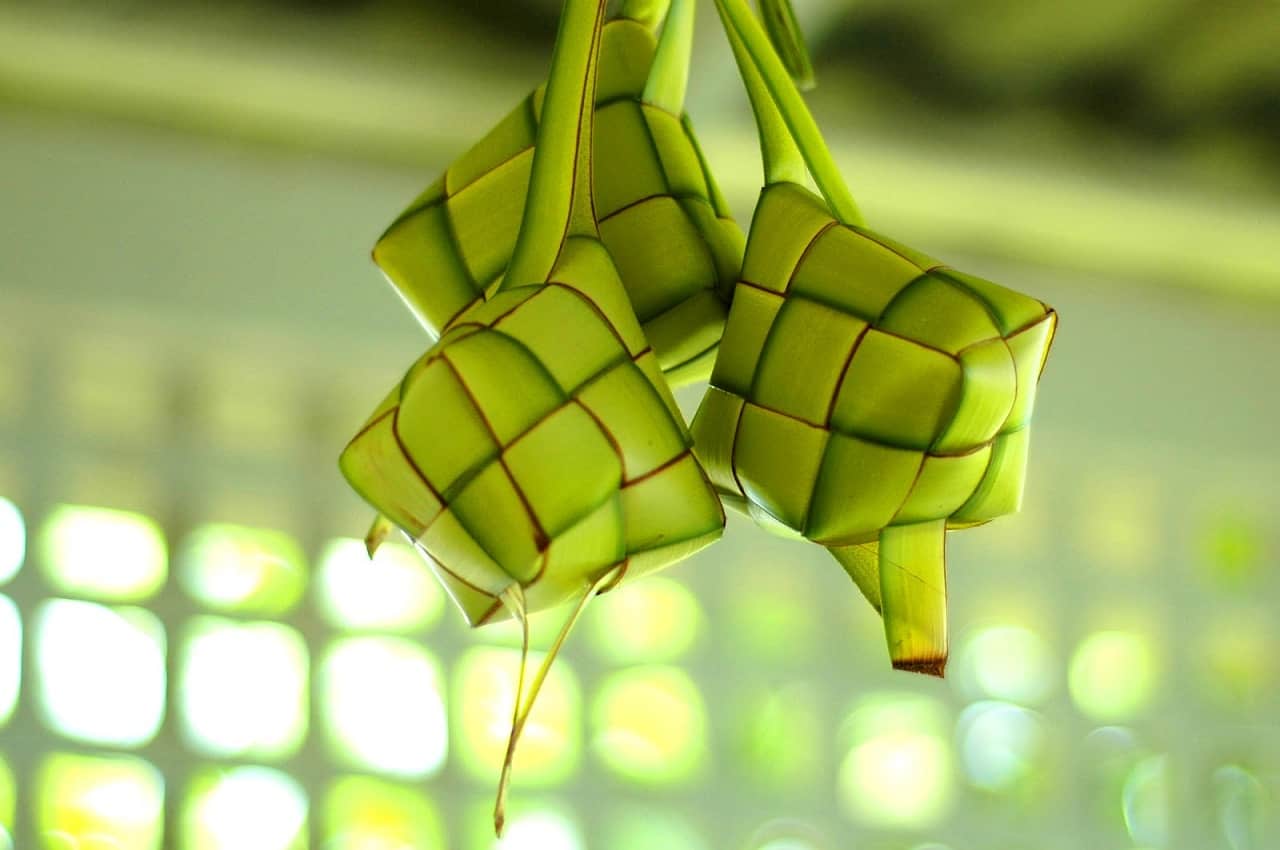
Top photo credit: papasemar.com
Who does not know ketupat (a type of dumpling made from rice packed inside a diamond-shaped container of woven palm leaf pouch) ? This dish seems to be a mandatory menu during Eid, both Eid al-Fitr and al-Adha. Ketupat is usually served with various complementary menus such as rendang, fried chicken, chayote, potato fried sauce, to crackers.
Although it has become a tradition, but not many people know the history of Ketupat Lebaran. Compiled from various sources, the following is the origin story of ketupat which become the typical food of Eid.
Angelina Rianti and her colleagues have discussed the history of ketupat and the connection with Lebaran tradition in Indonesia written in the Journal of Ethnic Foods (Science Direct, March 2018). Based on information from the journal, ketupat was first introduced by Sunan Kalijaga in the 15th century until the beginning of the 16th century.
Sunan Kalijaga is a theologian and one of nine Walisongo who was very instrumental in spreading Islam in Java. During preaching in Demak, Sunan Kalijaga held two events after Ramadan, Bakda Lebaran and Bakda Cilik or Bakda Kupat.
Bakda Lebaran was held on the first day of Eid by praying and friendship. While Bakda Kupat was celebrated a week after. Bakda Kupat itself was actually rooted in the previous culture, which was later adapted by Sunan Kalijaga to become an Islamic tradition in Java.
When Bakda Kupat, almost everyone made processed-rice dishes which were then given the name kupat or ketupat. They made wajik square using janur (young coconut leafs), then filled it with rice, after that it was steamed and dried. Ketupat was then distributed to close relatives as a symbol of togetherness and sharing.
Over time, the tradition of ketupat spread to several neighboring countries such as Singapore, Malaysia, and Brunei. This goes hand in hand with the spread of Islam which is increasingly widespread and brings one of Indonesia's unique cultural traditions, which is to make ketupat during Lebaran.
Philosophically, ketupat is a symbol of apology and blessing, which is also in accordance with the meaning of Idulfitri. Rice which is used to make ketupat symbolizes lust. While one version of history believes that janur is an abbreviation of jatining nur, a Javanese expression meaning conscience. In other words, ketupat means symbol of lust and conscience. Through ketupat, humans are expected to be able to resist their lust with their conscience.
Meanwhile, in Sundanese, ketupat is often called kupat. Sundanese believe, kupat can remind people not to curse or speak bad things to others.
In Javanese, ketupat is also a kind of phrase that refers to "confessing or claiming to be wrong." There is an implied message that encourages people to apologize if they have mistakes. This behavior has become a habit or tradition at the beginning of Shawwal or the first day of Eid, and the end of the month of Ramadan is marked by eating ketupats accompanied by several side dishes.
Ketupat is also used as a symbol of recognition. "In addition to claiming mistakes, ketupat is also interpreted as laku papat (four virtues). Laku papat consists of four actions, lebaran, luberan, leburan, dan laburan," writes the journal.
Lebaran, which means wide, means the door of apology is wide open. When someone forgives the mistakes of others, they will receive many blessings. The word lebaran also refers to the wide word in Javanese which means, "after completion". The end of Ramadan is celebrated by eating ketupat.
While Luberan means "abundant," which gives a message to distribute their wealth to poor people through charity. Whereas Leburan means to forgive each other. All mistakes can be forgiven on that day because humans are required to forgive each other.
And Laburan is taken from the Javanese word "Labur" which means human is pure and free from sin. In this case, ketupat gives a message to maintain honesty. Therefore, after did Leburan (forgiving one another), people must reflect good attitudes.
"Based on an interview with one of the Javanese cultural experts, white rice is interpreted as a symbol of prosperity and happiness. The yellowish green wrapper is considered as one of the rejects of reinforcement or rejecting bad luck. The process of hanging ketupat after being cooked in front of the house is symbolized as a form or tradition of casting out spirits evil, "explained the journal. Therefore, ketupat is often found hanging in the doorway to prevent evil spirits from entering the house.
Ketupat is also usually served in different ways. One of them is mixed using coconut milk as a boiling medium instead of water. Santan in Javanese is called santen, which means "pangapunten" or apology.
An Indonesian anthropologist interprets ketupat as one of the symbols of social solidarity or reciprocity such as giving and receiving, known as the law of reciprocity.
The interrelation is manifested in the tradition of mutual giving. Giving behavior shows a interrelation between one person and another. "Such behavior signifies social relations because contact and communication with others will lead to an attitude of solidarity," the team of authors wrote in the journal.

